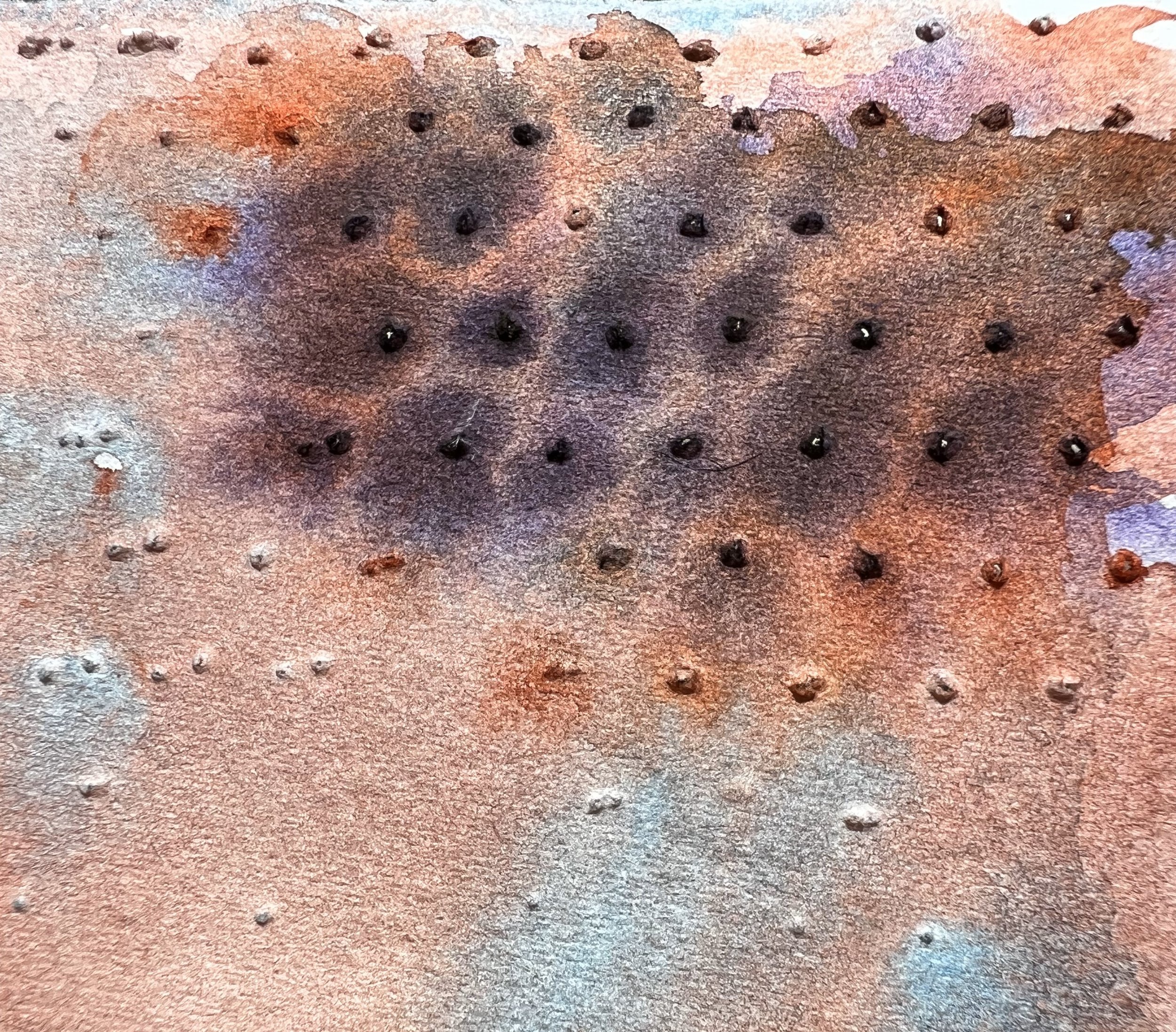
In his art, the artist explores themes at the intersection of human dignity, legal protection, and social taboos. By examining the phenomena of violence—both direct and veiled under “legitimized” rituals—he addresses the deep contradictions within contemporary society. His works expose human vulnerability to systems that are supposed to protect but often become instruments of oppression. From human trafficking to cultural rituals that reinforce injustice, the artist invites viewers to confront issues that are often silenced yet continue to exist. His visual language is not just an aesthetic statement but an act of resistance—a way to give a voice to those whose right to freedom and safety has been suppressed.
Drawing from various sources—documentary evidence, personal stories, public discourse, and statistical data—the artist creates works aimed at deep analysis and reflection on complex, often overlooked subjects. His goal is not only to bring these issues to the audience’s attention but also to create a space for dialogue, allowing each viewer to reconsider their own perspective.
His works encourage the audience to face uncomfortable truths and reflect on how these issues manifest in both personal and public life. They also call for collective awareness at governmental and societal levels, highlighting the possibility of providing help, protection, or change where it is needed.
Created from natural materials using water-based techniques, the artist’s works return us to the purity and harmony of nature. This softness and fluidity contrast sharply with the heavy and urgent themes of his art, creating a striking visual tension. His paintings intentionally retain traces of damage—cuts, punctures, and tears—reminiscent of wounds inflicted upon both nature and human life. These marks symbolize pain and loss, yet at the same time, they hint at the possibility of healing. Hand-dyed watercolor threads, which the artist stitches into his works, become a metaphor—threads of hope capable of mending, reconnecting, and restoring what has been broken. This process is not merely an artistic gesture but also a symbol of action—an invitation to awareness, solidarity, and the pursuit of harmony between humanity and nature.
In a series dedicated to the vulnerability and insecurity of children, the artist uses the “Tally Marks” method in the painting Mother’s Hands to visually count and convey the scale of missing children in Europe. By incorporating approximately 500,000 tally marks, he draws attention to a global tragedy that remains unresolved at the state level. Immersing himself in the emotions of losing a loved one, experiencing grief, and facing the loss of meaning and uncertainty—as seen in the 2024 painting Lostness—the artist compels the viewer to reflect on the fact that such experiences can happen to anyone. Through his work, he invites the audience to empathize, recognize the importance of helping others, and appreciate the fleeting moments of life. He highlights how it often takes a direct encounter with loss or pain for us to reevaluate the ordinary and recognize the value in what we take for granted.
The artist addresses universal themes of child vulnerability, without dividing them into different worlds. He reveals tragedies where the sale of children becomes part of cultural norms or economic necessity. In the 2024 painting Farewell, he depicts a 12-year-old girl being prepared for sale by her family, who place a ceremonial collar around her neck. This act is a means of survival, allowing the family to sustain themselves temporarily until the younger child grows up. These works draw attention to global social issues, prompting reflection on how societies and governments can prevent such tragedies.
The 2024 piece Balance, consisting of 25 paintings, features handprints of African children stitched together with the hands of a white person, symbolizing acts of help, connection, and mutual support.
Each piece reflects an individual story of interaction, emphasizing both the fragility of vulnerability and the strength of human connection. The stitched threads not only unite but also serve as a reminder of the need for collective effort to overcome social and cultural barriers, reinforcing the idea of equality and solidarity. Through his watercolors, the artist creates a space for reflection, internal resistance, and hope for change.